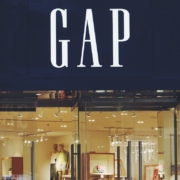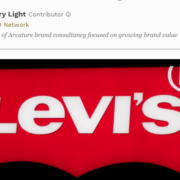The Revitalization Of Barnes & Noble
Recently, The New York Times ran a lengthy story about the revitalization of Barnes & Noble, the last book megastore on the American retail landscape. Although some still question the future of the brand, there is no question that Barnes & Noble has come back from the brink.
In August of 2019, activist hedge fund Elliot Management Corporation purchased Barnes & Noble for $683 million (including debt), taking the bookstore brand private. At the time, responses from the trade and business presses were interesting. Financial Times called the deal “contrarian” while The New York Times hailed the purchase as “a sigh of relief” for book retailing. Elliot Management already owned a UK bookseller, Waterstones and had been successful achieving a turnaround of that UK brand. The turnaround was led by Waterstones’ CEO James Daunt.
Still, for Elliot Management, Barnes & Noble presented a challenge. The brand had survived close calls many times over since its inception in 1886. (The name Barnes & Noble did not appear until 1917.) The environment for large mega-bookstores was not particularly favorable in the mid-2000’s. Barnes & Noble’s competitor Borders went belly-up in 2011. To counter the onslaught and inroads of electronic books and Amazon’s online sales, Barnes & Noble added non-book items such as music, children’s educational toys, events, and Starbucks’ cafés. Barnes & Noble created its own ereader, Nook, to compete with Amazon’s Kindle, but gave Nook very little attention. Barnes & Noble found itself in the unfortunate middle between Amazon and small, independent stores catering to specific subjects mirroring either the tastes of their owners or satisfying local predilections. Barnes & Noble’s stores became a jumble of books and merchandise unrelated to books.
The business press and many readers questioned whether Elliot Management could reignite Barnes & Noble for a future of enduring profitable growth. There were many who thought the Waterstones experience was not transferable to the US.
Elliot Management believed that the strategy used by James Daunt at Waterstones – allowing local bookstores to cater to local tastes providing an in-person experience – would work in the US. After all, localization was, and still is, an important driver of sales. So, Elliot Management asked Mr. Daunt to take the CEO position at Barnes & Noble.
As described in The New York Times, “His (Mr. Daunt’s) theory was that chain stores should act less like chain stores and more like independent shops, with similar freedom to tailor their offerings to local tastes.”
When asked about his plan for Barnes & Noble, Mr. Daunt stated that he was not interested in “remaking” Barnes & Noble as Waterstones: he just wanted to make Barnes & Noble a better bookshop. Along with the localization strategy, Mr. Daunt put power back in the hands of the general managers. Mr. Daunt indicated that he would not dictate to the local store managers and staff. Let the general managers select books of interest to that particular store’s customers. Barnes & Noble’s chain strategy had been to fill stores with the same books regardless of geography and neighborhood.
Mr. Daunt’s strategy for Barnes & Noble’ rejuvenation rested on three critical factors. Two of these factors are essential for any retail revitalization (1) “Nothing happens until it happens at retail;” (2) “The General Manager is the Brand Manager.” The third factor is essential for all great brands: 3) “Leveraging A Stellar Reputation.”
- Nothing Happens Until It Happens at Retail
Revitalizing Barnes & Noble required revitalizing the brand’s in-store, retail experience. This meant articulating the Barnes & Noble brand promise so clearly that every employee understood what the brand stands for in the customer’s mind. Everything that happens must be focused on bringing this promise of a relevant, differentiated, trustworthy brand experience to life for every customer, every day, in every store.
According to its website, the mission of Barnes & Noble “… is to operate the best omni-channel specialty retail business in America, helping both our customers and booksellers reach their aspirations, while being a credit to the communities we serve.” Mr. Daunt counted on the desire for personal, human contact when buying books, in contrast to Amazon, which uses technology to personalize online promotions and servicing its brick-and-mortar bookstores.
As The New York Times pointed out, “Buying a book you’re looking for online is easy. You search. You click. You buy. What’s lost in that process are the accidental finds, the book you pick up in a store because of its cover, a paperback you see on a stroll through the thriller section.
“No one has quite figured out how to replicate that kind of incidental discovery online. It makes bookstores hugely important not only for readers but also for all but the biggest-name writers, as well as for agents and publishers of all sizes.”
The concept of discovery is one key reason stores such as TJ Maxx and Home Goods are so popular.
- The General Manager is the Brand Manager
No one knows a marketplace locale and its customers better than the store’s general manager. It is the role of the general manager, along with staff, to deliver the brand’s great experience to customers. The general manager brings the brand to life making sure that each and every customer contact meets expectations. It is the responsibility of the general manager to assure the brand lives up to its promises.
Whether hotels, restaurants or other retail establishments, the importance of the general manager needs to be recognized. The general manager knows the customer’s needs and problems and how to solve these problems. The general manager knows the neighborhood, community and local business relationships. To localize and personalize the Barnes & Noble brand experience, the chain allowed each store’s general manager to be the real brand manager. Each store manager was, and is, in charge of localizing books for locals’ preferences.
- Leveraging A Stellar Reputation
Just because Barnes & Noble was in crisis at the time of the Elliot Management purchase, did not mean Barnes & Noble had lost its positive reputation. The Reputation Institute’s 2018 US Retail RepTrak® Rankings, cited Barnes & Noble as the: “#1 most reputable retailer in America.”
Data show that brand reputation can alter customers’ preferences for products and/or services they might consider buying. Brands known for being extraordinary in their market gain customers’ confidence. Exceptional reputation distinguishes a brand from brands in its competitive set. A great reputation allows a brand to potentially secure a premium price, generate positive word-of-mouth support and be a barrier to copy-cat brands.
Reputation is based on perceptions that the brand is able to consistently meet the expectations of its stakeholders. The brand must consistently perform its activity over time in a quality manner.
In a dynamic and uncertain world, people seek familiar touchstones of expertise, authenticity and trust. Trust is an increasingly important factor in customer decisions. A strong, trustworthy business reputation contributes to high quality revenue growth.
Reputation is a source of confidence. Reputation provides customers with authoritative information and credibility. Reputation provides continuity and consistency across all platforms.
Reputation is the overarching evaluation of past performance. A brand can learn from the past and build on that past. For Elliot Management and its Barnes & Noble’s CEO, James Daunt, the key issue was not what Barnes & Noble had accomplished. The key issue was how these past accomplishments were going to drive the brand’s future. What Barnes & Noble did to move forward was not live off of its reputation, but leverage that reputation as a pathway to a profitable, enduring future.
By focusing on the individual store to deliver the Barnes & Noble brand experience to its local geography and/or neighborhood, the brand succeeded. Barnes & Noble merged its glowing, solid reputation with two other fundamental principles that drive retail, nothing happens until it happens at retail and the general manager is the brand manager.








